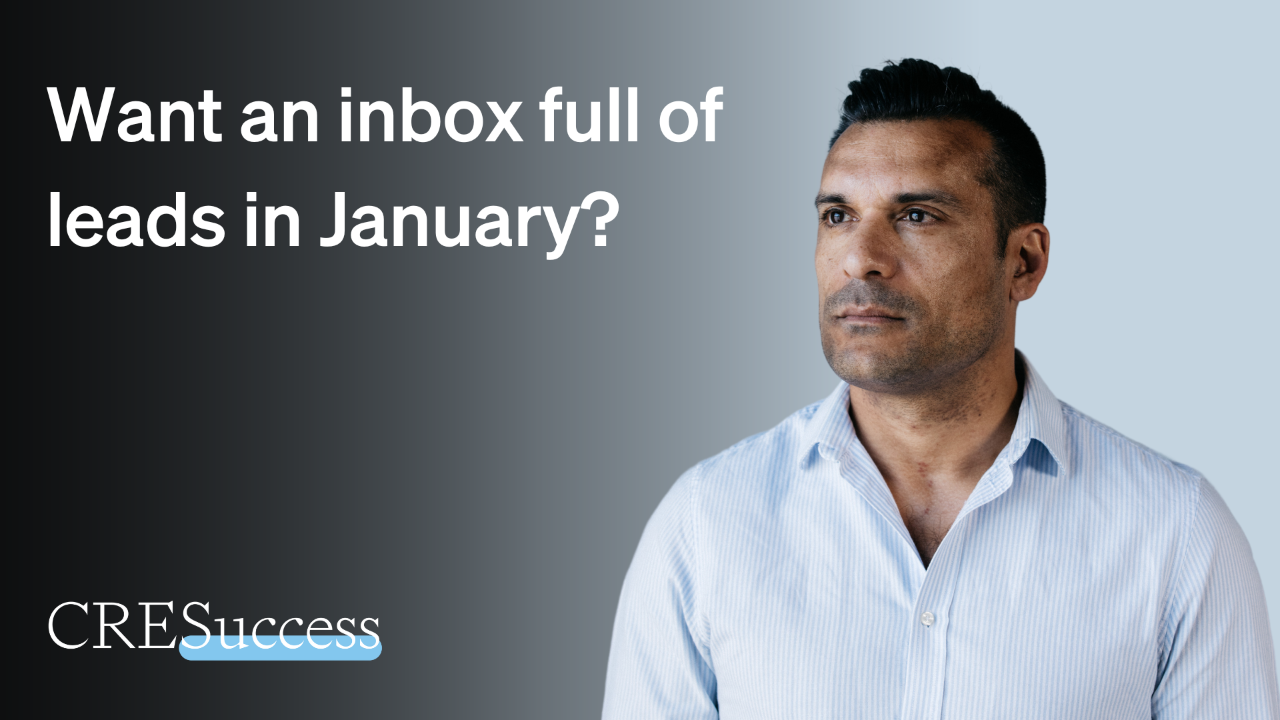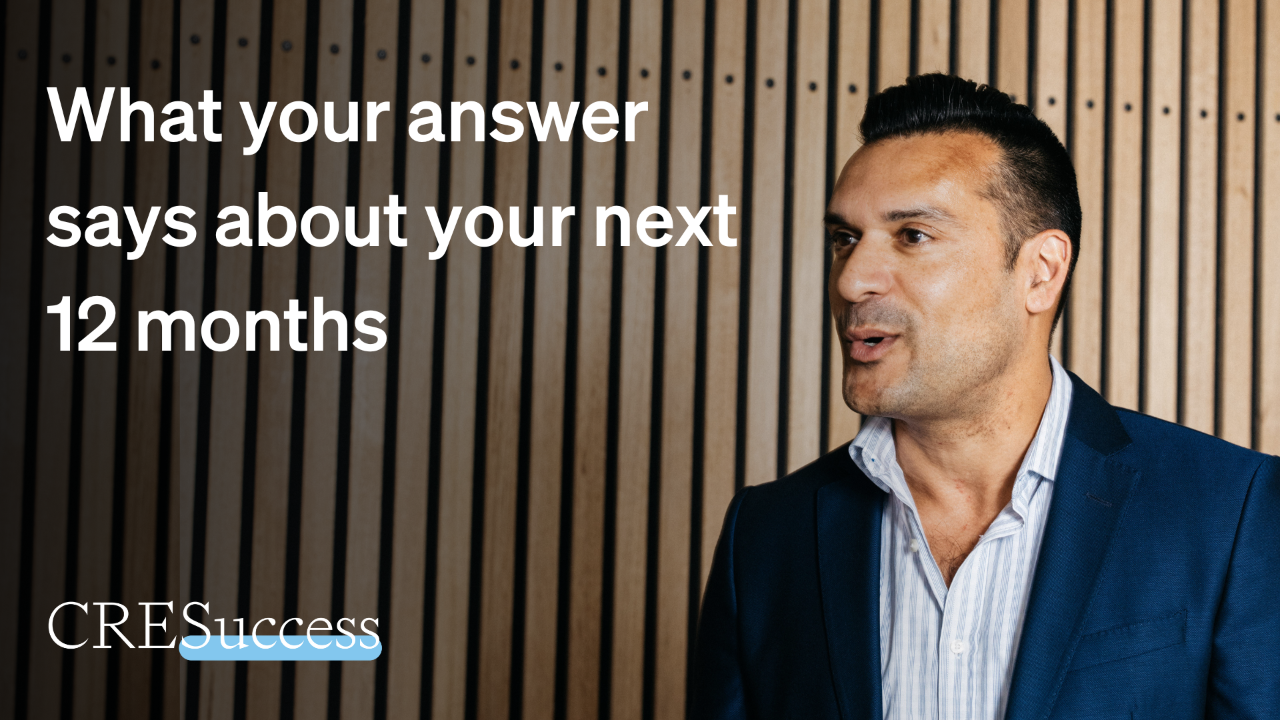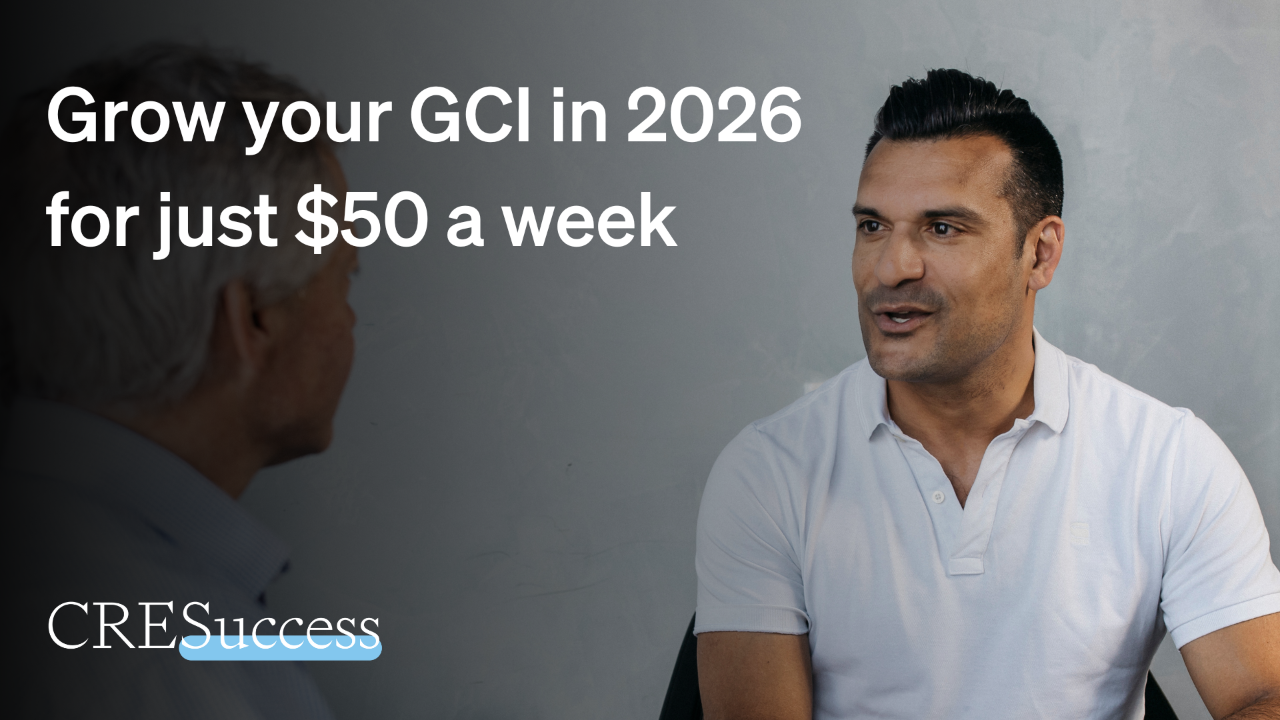Use my three Cs of email marketing to turn your contact list into deals
Feb 29, 2024
Since CRE Success was launched nearly four years ago, I have consistently sent an email to my list at the same time every single week.
When I have an invitation to make, I send a few more emails than I usually do.
Despite the proliferation of social media, email is still the number one channel for communicating with your contacts.
It’s what has helped me grow our community of commercial real estate agents and brokers to more than 100 members.
It’s also been a force behind me building a roster of 20 commercial real estate businesses as private coaching clients.
Most commercial real estate businesses have massive email databases that they’ve spent years diligently growing.
The problem is that too many then fail to harness the power of email marketing.
Don't make the mistake of building a list and then not investing time and effort into email marketing.
By following my three Cs of email marketing—Cadence, Content, and Calls to Action—you can transform your database from a dormant list into an active asset.
This will drive meaningful connections, creating more opportunities for you and your clients.
Now is the time to commit to not let your email list languish unused and leave deals on the table.
To leverage the power of email marketing and propel your commercial real estate business forward, take a listen to episode 174 of Commercial Real Estate Leadership.
Episode transcript:
Most commercial real estate businesses have an email database.
But many commercial real estate businesses undervalue and underutilize that asset.
Because your email database is a list, which you've probably spent years diligently collecting and adding to, but maybe you're not spending as much time turning that list into value.
So, in today's episode, I want to give you some principles of how you can be working your email database, specifically, the three C's of email marketing, which are the cadence, the content, and the calls to action.
Hello, and welcome to episode 174 of Commercial Real Estate Leadership. I'm your host, Darren Krakowiak. And I help commercial real estate leaders to make their business bigger.
And one way that we do that is we put out reports and free information.
And one that we put out recently is our report, Multiplied Growth.
It runs through the four ways to grow a commercial real estate business. That being organic growth, also recruitment and development, retention of your people, entering new markets, and also mergers and acquisitions.
This particular report looks at how to activate more organic growth in your business.
And if you want to get your hands on it for free, you can grab yourself a copy at cresuccess.co/growth
Now, in today's episode, I want to talk to you about how you can be working your email database.
And in previous episodes, we've talked about the fact that marketing is leveraged, but sales is not.
And when you are working your database, you are doing something which is a highly leveraged activity.
It's marketing to many people, but through one activity, which is just writing the email, scheduling it and then sending it out to your list.
Now, great marketing makes sales so much easier. And in fact, sometimes if your marketing is so good, it even makes sales unnecessary.
I've spoken to people who have been putting out content, who had been consistently emailing their database and then out of the blue, someone will call them and they are ready to go based on all of that.
Know, Like & Trust, (which will define a moment) that has been built up through the consistent email contact that you've been making with your email database.
So, I want to take you through today the three C's of email marketing.
Because sometimes I hear from people, "You know what? Yes, I've got this email database, I don't know how often I should be contacting them. I don't know what it is that I should be putting in the emails."
And also, "I don't know how to get people to actually respond to contact me, once I have sent them the email."
So, the three C's that we're going to talk about are 'Cadence', which is just how regularly it is that you're contacting your email database.
I want to talk about 'Content', which is what you do put in HTML.
And finally, I want to talk about 'calls to action', which is the, 'so what'. What is it that you want the recipient of the email to do next?
So, let's start off with 'Cadence'. And a question I often get is, "Well, how often should I be sending emails?"
And there's no right or wrong answer. But if you want me to give you an answer, I would say, "Every single week is a good sort of cadence, rhythm to get into when it comes to email marketing."
Now, if you cannot commit to every week, I would encourage you to at least be sending emails every second week.
Now, if you think that every week is a little bit excessive, let me just give you a couple of points to consider.
The first one is that only 25% of people on average will actually open and read the emails.
So, that means on average, if you send an email every week, people in your email list will probably open and read on average one per month.
That doesn't sound like too many, when you consider the average open rates.
I think when you commit to contacting people on a regular basis, that's how you build a relationship.
And by being consistent with the emails that you send, you're actually positioning yourself as someone who is consistent who can be relied upon.
And if you're putting valuable content in that email, (and we'll talk about content in a moment), you've got to be seen as someone who potentially is someone of value, who can be contacted when they do have a question when they're ready to take the next step.
Now, one concern that some people have about email marketing, and particularly sending emails once a week is that, "Well, what happens when people start to unsubscribe?"
Well, I guess my answer to that is, if we are worried about people unsubscribing to emails, then we would never actually send out email marketing.
And if we actually send regular emails, we'll the research shows that people will actually be less likely to unsubscribe because we've built up that relationship and they are expecting a regular email from us.
If we only sporadically email our lists, people sometimes think, "Well, what's this?"
They don't know what it's about, or there's no regular relationship that's been built up. And that makes them more likely to hit unsubscribe.
But the other point I want to make about this is, don't not communicate with people who want to hear from you, just because you're focused on the very small, tiny percentage of people who will hit unsubscribe.
If you're focused on the people who hit unsubscribe. And it's not uncommon for maybe half a percent of people to unsubscribe, when you do send out email marketing. That's fine.
Because all of those other people who do open and read the email, they're the ones we want to focus on and build up the relationship with.
And another way to think about this is your job is to get more people to be added to your list each week than those who unsubscribe each week.
So ultimately, we want to be adding more people to the list than people who do unsubscribe.
And again, I do promise you if we get the content right, and if we establish a great rhythm, a cadence, then people will be less likely to unsubscribe.
So, let's talk about the content. There are three types of content that I'd recommend.
And you can use this framework for content on social media as well as content that you put into your eDMS, your email blasts.
One is awareness, and that is your listed, sold, leased.
All of that information that I think when people do send out email marketing is usually, we just listed this, we just sold that, we just leased that.
That has a place in your email marketing. And certainly, you want to be sharing that information to create awareness about the deals that you're doing, and the opportunities that you have available for people who are on your list.
But also, I think we want to be building up our authority.
And the ways that we can build up our authority is to maybe showcase awards that have been won.
Maybe client testimonials, perhaps you want to talk about what's going on in the market and provide your take.
And that then becomes a valuable piece of content as opposed to just self-promotional content.
When people realize that your email is not just listed and sold and leased, they're more likely to open the email because they know it contains value.
So, we've got awareness content, we've got authority content, the last bit of content that I'd recommend that you include in your emails, is content that builds up affinity.
So, you can share information about yourself or your team.
A few examples might be when there are babies, were there engagements and marriages, sponsorship of local sports teams, charitable initiatives that you are members of your team have been supporting, maybe your commitment to the local community.
Many different ways that you can build affinity by showing people a little bit of who you are through your email marketing.
And what the awareness, the authority and the affinity content does is it builds up the Know, Like & Trust or accelerates that Know, Like & Trust process at scale in a more leveraged way.
So, in order for people to do business with you, they need to know you, they need to like you. And ultimately, they want to be able to trust you.
So, to 'Know' you, that's the awareness content. To 'Like' you is the affinity content. And then there'll be able to 'Trust' who we are and what we can do for them when we build up our authority.
So, another way to think about the types of content that we're sharing, particularly around authority posts, but maybe also around affinity is what is the one thing that you would like you or members of your team to be known for.
Do you want to be known for being a great negotiator, for having innovative marketing campaigns, for having the best auction campaigns in your market.
Maybe it's just your local routes, the fact that you've lived in the local area, and that you've got a deep connection to the area to the patch in which you're covering.
These are all things that you can reinforce through your email blasts.
And in terms of how you can check what content is resonating, have a look at the Clickthrough rate (CTR) for certain types of content.
For subject lines, you can test different subject lines.
And what again the research shows is that if we use very sort of simple language, that's usually what works as opposed to 'just listed' or 'just sold'. That sounds like marketing.
If it sounds more like an email that they're going to receive from a friend, that probably is going to increase the likelihood that they will open that email.
So, these are all a few different tactics that we can use to improve the deliverability.
Because if we use spam words, they're less likely to be caught up by, they're more likely to be caught up by spam filters.
But also, when people see it in their inbox, if it doesn't look spammy, they're more likely to open it.
So, the last 'C' that I want to talk about today was calls to action.
And this is really what is it that you want the reader to do as a result of having open that email or read through a specific piece of content that's within that email.
So, you can post questions, you can ask for feedback, you can offer appraisals, you can maybe talk about a deal that you've done.
But on some instances, you might hold back certain information and that you can say, "if you'd like all the details, give me a call, reply to this email, and we can talk about it."
I think, when we treat clicks as indicators of interest, we also have a call to action for ourselves. And that is to follow people up.
So, what I mean by that is, if you have a click through report, and it shows that somebody has clicked on, say, a listing 18 times, that probably indicates that that person is interested.
And it would be incumbent on you to give them a call, because even if they're not interested in buying or leasing that property, there's some reason why they're clicking on it 18 time.
So, let's take the initiative to find out why it is that somebody is very much engaged with that particular piece of content.
So, just to sort of recap what we talked about email marketing, you've got an email database in your business, you've probably got 1000s names on it.
If you just let it sit there dormant and not do anything with it, or if all you do with that list is send through emails about what you've listed and sold and leased, then you're not using that email list to its full advantage for its full benefits to your business.
So, let's remember the three C's of email marketing, which is the 'Cadence', how regularly we are emailing our list.
The 'Content', so not just talking about listed sold and least, we're also looking for content that builds up our authority and also creates affinity between us and the reader.
And finally, we want to make sure there are 'Calls to action' that people know how to take the next step, that they're reminded of how it is that we can help them, but also that we are looking for any calls to action for us.
Such as people who are opening or clicking through emails many many times because that indicates that something has piqued their interest.
That is our episode for today. Thank you so much for listening, and I will speak to you soon.








